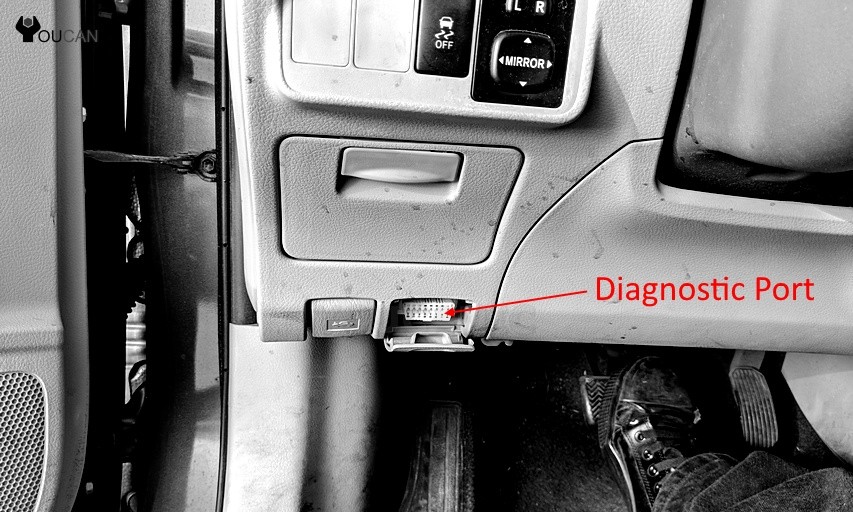Finding the OBD2 port in your 2017 Isuzu Sportivo is crucial for diagnostics and maintenance. This guide provides a clear explanation of its location and answers common questions.
The OBD2 (On-Board Diagnostics) port in your 2017 Isuzu Sportivo is typically located under the dashboard on the driver’s side, often to the left of the steering column. It’s a standardized 16-pin connector used to access your vehicle’s diagnostic system.
Pinpointing the OBD2 Port in Your 2017 Isuzu Sportivo
While the general location is under the driver-side dashboard, sometimes the port can be hidden. Here’s a more detailed approach to finding it:
- Visual Inspection: Start by visually inspecting the area under the dashboard, to the left of the steering wheel. Look for a trapezoidal-shaped connector with 16 pins.
- Feel Around: If you can’t see it, try feeling around in the same area. The connector housing is usually made of plastic and may have a protective cap.
- Use a Flashlight: In some cases, the port might be recessed or obscured by other components. Use a flashlight to illuminate the area for better visibility.
- Check Your Owner’s Manual: If all else fails, consult your 2017 Isuzu Sportivo owner’s manual. It should provide a diagram or specific instructions on locating the OBD2 port.
Why is the OBD2 Port Important?
The OBD2 port allows mechanics and car owners to:
- Read Diagnostic Trouble Codes (DTCs): Identify the source of malfunctions within the vehicle’s systems.
- Monitor Real-Time Data: Observe sensor readings and engine performance parameters.
- Perform Emissions Tests: Verify compliance with environmental regulations.
- Customize Vehicle Settings: Adjust certain parameters using specialized software.
Common OBD2 Port Uses for a 2017 Isuzu Sportivo
- Check Engine Light Diagnosis: The most common reason for using the OBD2 port is to diagnose the cause of an illuminated Check Engine Light.
- Emissions Testing: Required for vehicle registration in many areas.
- Performance Tuning: Enthusiasts and mechanics can use the port to adjust engine parameters and optimize performance.
- Maintenance and Repairs: Provides valuable data for troubleshooting various vehicle systems.
OBD vs. OBD2: What’s the Difference?
OBD (On-Board Diagnostics) is a general term for vehicle diagnostic systems. OBD2 is the second generation of this system, standardized in 1996 for vehicles sold in the United States. All 2017 Isuzu Sportivos are equipped with OBD2. The terms OBD-II and OBD2 are used interchangeably.
Troubleshooting with an OBD2 Scanner
An OBD2 scanner is a handheld device that connects to the OBD2 port and allows you to read and interpret diagnostic data. These scanners range from basic code readers to advanced professional tools.
Frequently Asked Questions about OBD2 Ports
Q: Does the engine need to be running to use an OBD2 scanner?
A: The ignition usually needs to be in the “On” position (sometimes labeled as “Run” or “Accessory”). In some cases, the engine might need to be running. Always refer to the scanner’s instructions.
Q: What’s the difference between a code reader and a scanner?
A: A code reader can only read and clear basic trouble codes. An OBD2 scanner provides more comprehensive data, including live sensor readings, freeze frame data, and advanced diagnostic capabilities.
Finding the OBD2 port in your 2017 Isuzu Sportivo is the first step in diagnosing and resolving potential issues. Using a quality OBD2 scanner empowers you to understand your vehicle’s health and maintain its optimal performance.

